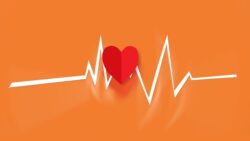A report from Denmark receiving a lot of press lately indicates a connection between the use of NSAID painkillers and an increased risk for a type of arrhythmia called atrial fibrillation. NSAIDs range from the common over-the-counter painkillers like ibuprofen, naproxen, also, caproxen, ketoprofen, dexibuprofen, piroxicam, and tolfenamic acid, and older prescription COX 2 inhibitors such as: diclofenac, etodolac, nabumeton, and meloxicam to the newer prescription COX 2 inhibitors like: celecoxib, rofecoxib, valdecoxib, parecoxib, and etoricoxib.
The researchers identified an increased risk of atrial fibrillation associated with NSAID use. Since atrial fibrillation is mostly a disease of older adults, the press that followed, focused on this relationship. Because of the study’s design, the press reports were completely appropriate, in older adults NSAID use, particularly the newer COX 2 inhibitors, were linked to a higher rate of atrial fibrillation.
The study was one of those large, registry-based, analyses of prescription and hospital records, which by definition include mostly in older adults. The primary endpoints were whether the person had a hospital or physician diagnosed case of atrial fibrillation and whether they also utilized NSAIDs. The study did not tabulate frequency of use or dosage to determine if more frequent use of NSAIDs or higher dosages increased the risk for atrial fibrillation. It simply backed into its findings using the diagnostic codes and prescription fulfillment, as is common in epidemiology and in most of medicine; diagnosis plus prescription equals relative risk. Easy, peasy, but not particularly useful as far as I am concerned.
As a woman, a mom and a women’s health researcher, I know that young women use NSAIDs cyclically, every month, month in and month out for years and years and often at high doses, to manage menstrual and endometriosis pain. What is their risk for NSAID based arrhythmia? As an athlete, I also know that female and male athletes, are prone to using NSAIDs with stunning regularity. What is their risk for an NSAID based arrhythmia? As a researcher, I know that women are more frequently prescribed psychotropics for anxiety or panic, for periods of rapid, fluttering heart beats, could these be NSAID based, undiagnosed arrythmias? And if a young, apparently healthy, woman is diagnosed with atrial fibrillation, or any other arrhythmia, would anyone consider a connection between her arrhythmia to her use of NSAIDs? I doubt it, and therein lay the problem with this type of research, and indeed, the entire disease-medication model of modern medicine. It is woefully incomplete, highly misleading, and it tacitly and often explicitly excludes women’s health issues in research.
Postscript
This research was first published in November 2013. A quick search to see if additional studies had been completed to address the risks of atrial fibrillation in younger adults, women and/or athletes, found nothing. However, one of our favorite heart doctors posted this article on the dangers of NSAID use in athletes. It appears that NSAID use increases inflammation and dehydration – not good. Consider again, the chronic and regular use of women who rely in NSAIDs for menstrual pain relief and the female athlete who utilizes NSAIDs not only to reduce menstrual pain, but also, to reduce training pain. What is her risk?
We Need Your Help
More people than ever are reading Hormones Matter, a testament to the need for independent voices in health and medicine. We are not funded and accept limited advertising. Unlike many health sites, we don’t force you to purchase a subscription. We believe health information should be open to all. If you read Hormones Matter, like it, please help support it. Contribute now.
Yes, I would like to support Hormones Matter.
This article was first published in May 2017.












